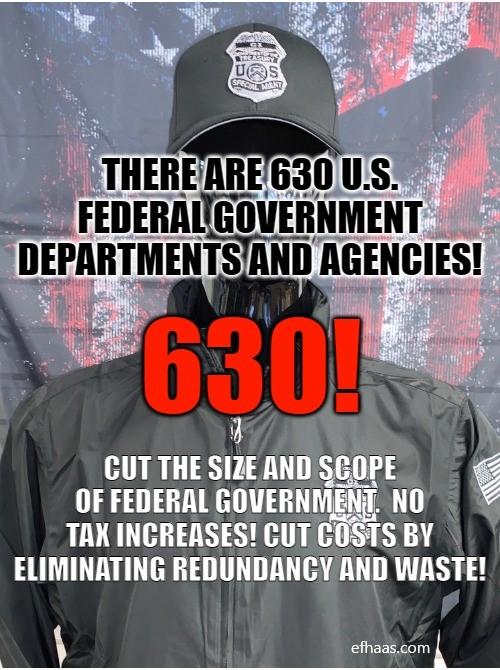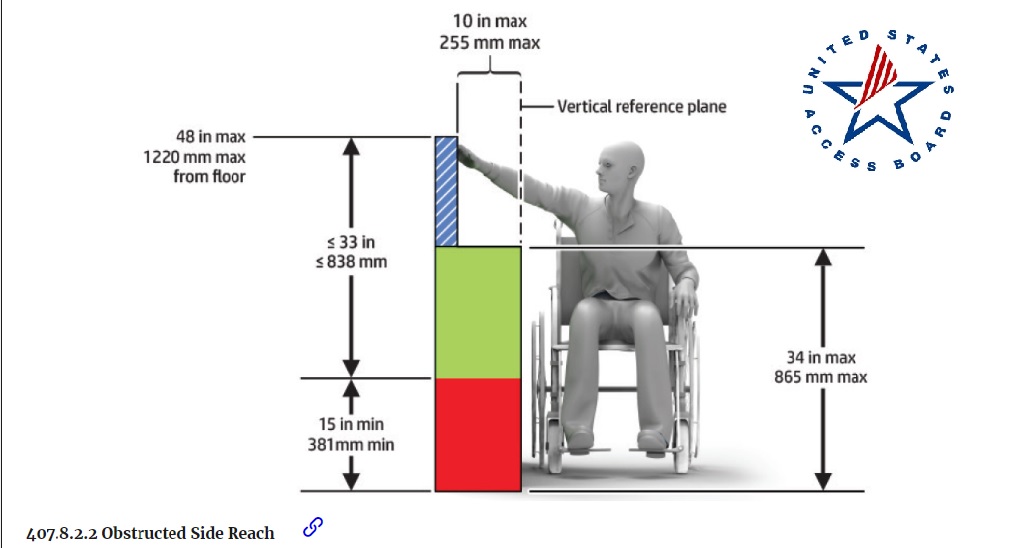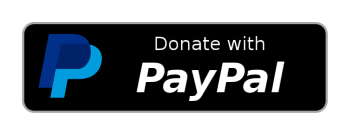There are 630 federal departments, agencies, and commissions. Approximately 400 have regulatory power. Half could be eliminated and most of the nation wouldn’t notice. The loss of liberty and freedom in the United States is proportional to the size and scope of the federal government. The larger the federal government gets; the fewer the rights the 50 states, and the people, retain.
~ Ed Haas
Get to Know a Federal Agency: Introducing – The U.S. Access Board
According to the official website, the Access Board is an independent federal agency that promotes equality for people with disabilities through leadership in accessible design and the development of accessibility guidelines and standards. Created in 1973 to ensure access to federally funded facilities, the Access Board is now a leading source of information on accessible design.
Like every other federal department, agency, or board, once it’s intended purpose seems fulfilled, it will create a new problem to “fix”. Fifty years since its inception, building accessibility is built into every remodel or new design. Architects, general contractors, and building inspectors, draw, construct, and enforce compliance with the Americans with Disabilities Act (ADA). The basic work of developing accessibility guidelines and standards was completed decades ago. Today, the execution is a forethought when designing any space.
The U.S. Access Board has regulatory powers. It creates rules that are enforced as laws. There are four primary laws concerning the Access Board.
- Americans with Disabilities Act (ADA) of 1990
- Architectural Barriers Act (ABA) of 1968
- Rehabilitation Act of 1973
- Telecommunications Act of 1996
The backstory of how the U.S. Access Board got involved with the Telecommunications Act of 1996 is not known. On its website the Access Board claims it was “given the job” of developing guidelines that describe what makes telecommunications products accessible. Final guidelines were published in February 1998.
The “guidelines” produced by the Telecommunications Access Advisory Committee are as common as ADA compliant restrooms, and wheelchair ramps to navigate from parking lots onto sidewalks. The committee was made up of product manufacturers, service providers, disability groups, and experts in communication access. It is difficult to believe the telecommunications industry was not already ADA compliant. The restaurant industry has been mindful of ADA compliance for decades. So has the retail industry and manufacturing industry wherever and whenever feasible. Like so much in the federal government, the guidance provided by the Telecommunications Access Advisory Committee was redundancy piled on top of redundancy.

The U.S. Access Board is made up of board staff and board members. There are currently twenty-two board members with space for twenty-five members. The twenty-five seats include thirteen public members and twelve federal members. The Chair of the Board is Taryn Williams / Assistant Secretary of Labor for Disability Employment Policy Department of Labor.
Approximately 30 staff members across four units: Office of Executive Director, Office of Administration, Office of General Counsel, and Office of Technical and Information Services make up the U.S. Access Board Staff. The cost to U.S. taxpayers for the U.S. Access Board is approaching $10 million annually. The Board has requested a total budget authority in FY 2023 of $9,850,000. Of that, $5,724,600 is for personnel salaries and benefits.
If the U.S. Access Board was shutdown today, and not another rule was issued regarding building accessibility, people confined to wheelchairs would continue to experience access, and even greater access, as designs and technologies improve. Prior to 1973, society wasn’t caring for disabled Americans as it is today. As previously mentioned, addressing accessibility is a forethought in design, manufacturing, and construction. The U.S. Access Board doesn’t hold a monopoly on looking out for disabled Americans, or how to improve access for Americans with disabilities.
The U.S. Access Board has served its purpose. The nation is over $31 trillion in debt. Cutting costs is never easy, but that doesn’t change the need to do so promptly. Any updates required to the four primary laws concerning the Access Board, after it’s dissolved, can be accomplished by legislators, or a smaller group of existing federal employees found within a wide array of remaining federal departments and agencies. Better yet, the federal government could employ the private sector on a short-term, as-needed basis for review and revision. Seamlessly, the private sector can become the “leading source of information on accessible design”.
Our national debt is $31 trillion. We must cut costs. Unpopular and difficult decisions must be made. (2 of 630 in this series)
~ Ed Haas





Comments are closed.